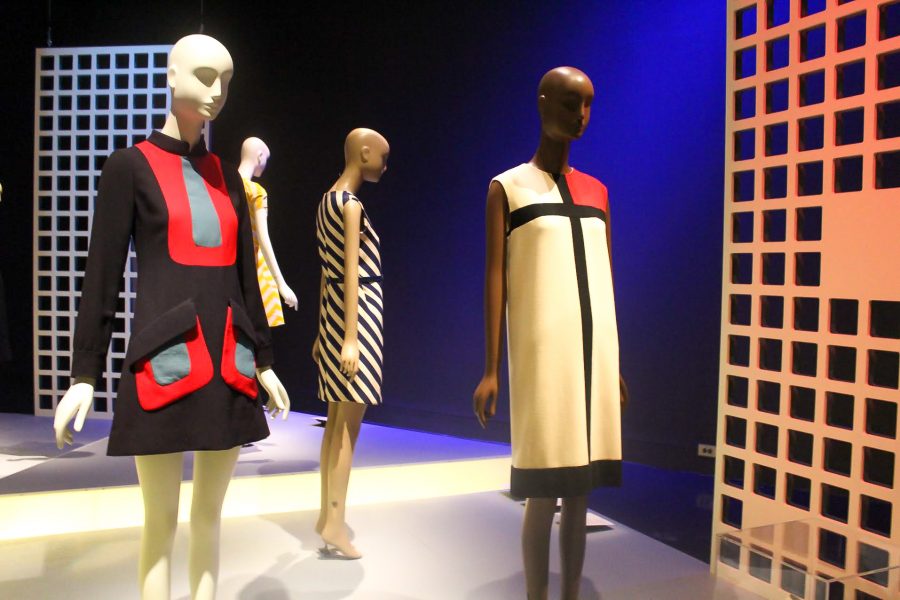FIT Celebrates the Modern Woman of the 1960s
Dresses from the Fashion Institute of Technology’s exhibit “Paris Refashioned (1957 – 1968).” These garments pushed the boundaries of acceptable dress for women in the 1960s feminist movement.
February 16, 2017
With a flourish of style and coincidental timing — New York Fashion Week is well underway — the Museum at the Fashion Institute of Technology opened its new exhibit “Paris Refashioned, 1957-1968.” Featuring dozens of dresses, suits and accessories from iconic French designers such as Christian Dior, Pierre Cardin, Hubert de Givenchy, Yves Saint Laurent and Coco Chanel, the exhibit highlights pieces from one of the most revolutionary periods of fashion history.
In the late 1950s and early 1960s, many designers stopped creating dresses for the reserved, compliant woman of the early 1900s. Feminism was emerging and women’s voices were finally being heard. The collection at FIT presents a variety of outfits which were considered scandalous for their time.
One of the most memorable pieces in the collection is a suit designed by Yves Saint Laurent that was later modeled by Twiggy in Vogue. At the time, the suit created a massive uproar among socialites who believed suits were only meant for men. Saint Laurent later silenced these critics, saying there was no reason a woman was any less feminine in pants than a skirt.
The public initially received many of the pieces in the exhibition with hesitation. In another sweeping trend, the hemlines of ready-to-wear dresses began to inch slightly above the knee. Revolutionary designers began to see wealthy women’s wardrobes as outdated, and collections like Saint Laurent’s Autumn 1959 created waves. One Chanel fashion show was reportedly received in stony silence.
Despite the initial shock and aversion accompanying this revolution, many of the pieces on display are today regarded as iconic, influential looks. Above all, the exhibition is a celebration of a generation of women no longer dressing for men, but for themselves.
Perhaps the most famous dress in the collection is Saint Laurent’s Mondrian block dress. Inspired by Piet Mondrian’s famous paintings, Saint Laurent famously disregarded norms and designed a boxy, geometrically color-blocked dress that openly rejected the idea that women should wear form-fitting, hourglass-shaped dresses.
Not all fashion designers were as open-minded. A plaque in the exhibit notes that Balenciaga stopped designing dresses in 1968, claiming that “true couture” no longer existed.
Nonetheless, a new revolutionary mindset began to form — one which argued that style was not determined by the designers, but rather by the consumer. At its conclusion, the exhibit quotes fashion writer Hebe Dorsey, who in 1972 said, “Fashion liberation has taken over from fashion determinism. Each woman is free to choose for herself, interpret the mode according to her own style, taste and figure, to participate in creation without being defined by absolutes.”
“Paris Refashioned, 1957-1968” will remain on view through April 15 at The Museum at FIT. Admission is free to all.
Email Natalie Breuer at [email protected].












































































































































